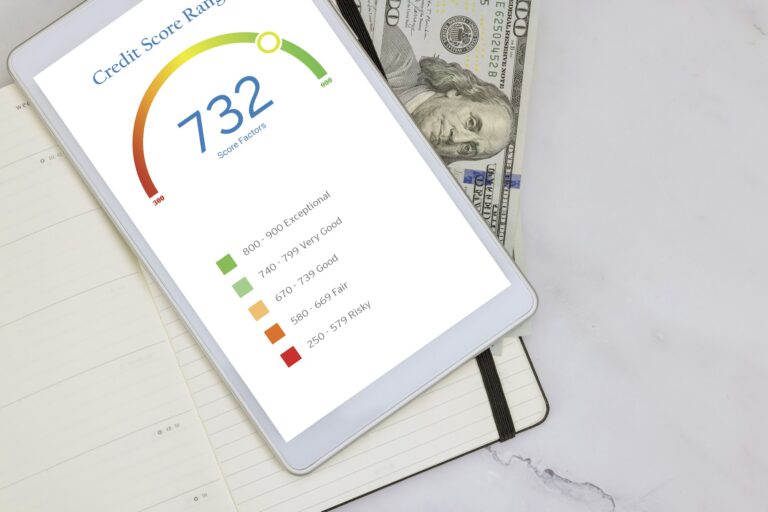
Navigating the world of auto loans can feel like embarking on a journey with countless twists and turns. Understanding auto loans is essential, whether you’re looking to drive a new car or purchase a trustworthy used vehicle.
Individuals can now make their car ownership dreams a reality by using available financial tools, which provide the necessary funds upfront and allow repayments to be spread over time. This guide simplifies the complexities of auto loans, helping you secure the best interest rates and understand loan terms, so you can hit the road with confidence and financial savvy.

You can get auto loans from banks, credit unions, and online platforms, giving you different choices when buying a car. They can be broadly classified into new car loans, used car loans, and refinancing loans. New car loans cater to those purchasing brand-new vehicles, offering financing solutions tailored to this market segment. Used car loans are made for people who want to buy pre-owned vehicles.
They offer financing options that are tailored to the specific characteristics of used car purchases. Refinancing loans give borrowers the opportunity to replace their current auto loan with a new one, which may have better terms and rates.
This can help them save money or adjust their repayment plan to fit their financial situation. These various types of auto loans cater to different needs and preferences, providing flexibility and accessibility for individuals looking to finance their car purchase or adjust their existing loan arrangements.
Competitive Rates: New car loans often come with competitive interest rates, especially for buyers with good credit.
Longer Terms: Lenders typically offer longer repayment terms for new car loans, allowing borrowers to spread out their payments over several years.
Manufacturer Incentives: Many automakers offer special financing deals and incentives for new car purchases, such as cash rebates or low-interest financing.
Warranty Coverage: New cars often come with manufacturer warranties, providing added peace of mind for buyers.
Higher Loan Amounts: Lenders may be willing to lend larger amounts for new car purchases due to the higher value and lower risk associated with new vehicles.
Flexible Financing: Used car loans offer flexibility in terms of loan amount, repayment terms, and interest rates, catering to buyers with varying credit histories and financial situations.
Lower Purchase Price: Used cars typically have lower purchase prices compared to new vehicles, which can result in lower loan amounts and monthly payments.
Vehicle Inspection: Buyers may need to have the used vehicle inspected before securing financing to ensure its condition and value.
Higher Interest Rates: Lenders may charge slightly higher interest rates for used car loans compared to new car loans, reflecting the higher perceived risk associated with older vehicles.
Shorter Loan Terms: Lenders may offer shorter repayment terms for used car loans compared to new car loans, aligning with the shorter expected lifespan of used vehicles.
Lower Interest Rates: Refinancing loans allow borrowers to secure lower interest rates than their current auto loan, potentially saving money on interest charges over the life of the loan.
Adjusted Loan Terms: Borrowers can adjust their loan terms when refinancing, such as extending the repayment term to reduce monthly payments or shortening the term to pay off the loan faster.
Improved Credit Score: Refinancing may help borrowers improve their credit score by demonstrating responsible repayment behavior and reducing their overall debt burden.
Equity Cash-Out: Some borrowers may be eligible to take out cash when refinancing their auto loan, using the equity in their vehicle as collateral.
Simplified Payment: Refinancing multiple auto loans into a single loan can streamline monthly payments, making it easier for borrowers to manage their finances.
When applying for an auto loan, there are a few important steps to follow. Gather important documents, such as proof of income, ID, and credit history, as these are usually required by lenders to assess your eligibility. Next, you have the option to apply for a loan directly with a lender or get pre-approved beforehand.
Getting pre-approved can simplify the car buying process by giving you a clear idea of your budget and making negotiations smoother. Once you’ve chosen a lender and been approved for the loan, you’ll need to review and sign the loan agreement. This document outlines details such as the interest rate, loan duration, and monthly payments.
Make sure to read it carefully and understand all terms before signing. After completing these steps, you’ll be ready to finalize the purchase of your vehicle and drive off with confidence knowing your financing is in place.
These examples illustrate different ways individuals can apply for auto loans, whether through a traditional bank, an online lender, or a dealership.
Auto loan interest rates can fluctuate depending on several factors, including your credit score, the amount of the loan, and the loan term. Typically, individuals with higher credit scores are eligible for lower interest rates, as they are considered less risky borrowers by lenders.
When considering an auto loan, it’s crucial to take into account not only the interest rate but also any extra fees linked to the loan, such as origination fees or prepayment penalties, as these can significantly impact the overall cost of borrowing.
To ensure you secure the most favorable rate and terms, it’s advisable to shop around and compare offers from various lenders. By exploring multiple options, you can identify the loan that best aligns with your financial situation and objectives, ultimately saving you money and ensuring a smoother borrowing experience.
Here’s a simplified breakdown of typical interest rate ranges for individuals with and without good credit:
* It’s important to note that these are approximate interest rate ranges, and actual rates can vary based on individual circumstances and lender criteria.

When you’re paying back an auto loan, it usually involves making monthly payments over a specific period, typically lasting from three to seven years. To speed up paying off your loan and cut down on interest costs, consider making extra payments or paying more than the minimum amount due each month.
Doing this can help reduce the total time it takes to repay the loan and save you money in interest fees over the long run. Some lenders may also give you options for flexible repayment schedules, such as biweekly payments instead of monthly ones or setting up automatic withdrawals from your bank account.
By taking advantage of these options, you can tailor your repayment plan to better fit your financial situation and pay off your auto loan more efficiently.
Let’s consider a scenario where two individuals, Alex and Jamie, each take out an auto loan to finance a $20,000 car purchase.
Alex chooses a 3-year loan term with a fixed interest rate of 4.5%, resulting in a monthly payment of approximately $593.
Jamie opts for a longer 7-year loan term with the same interest rate of 4.5%, which lowers their monthly payment to around $281.
Over the course of the loan:
While Jamie’s monthly payments are more affordable, they end up paying significantly more in interest over the longer loan term compared to Alex.
This scenario highlights how choosing a shorter loan term can lead to higher monthly payments but lower overall interest costs, ultimately saving money in the long run.
When you decide to take out an auto loan, it can have both positive and negative effects on your credit score. Initially, applying for a loan leads to a hard inquiry on your credit report, which might cause a temporary decrease in your score. However, if you make your payments on time and keep a positive payment history, it can gradually boost your credit score over time.
On the other hand, failing to make payments on time or defaulting on the loan can have adverse consequences, resulting in a drop in your credit score and making it more challenging to qualify for credit in the future.
When you fail to make payments on your vehicle and the situation escalates to repossession or the lender writes off the debt as a loss, it has severe repercussions for your credit score. This delinquency typically gets reported to credit bureaus, resulting in a significant negative impact on your credit score.
The missed payments and subsequent repossession or default can stay on your credit report for up to seven years, making it challenging to obtain credit in the future. Your credit score may plummet, making it harder to secure loans, credit cards, or favorable interest rates.
It’s crucial to manage your auto loan responsibly to maintain or improve your creditworthiness and increase your chances of securing favorable terms on future loans or credit applications.
When it comes to financing a used car, there are important factors to consider that differ from financing a new vehicle. Used car loans may have higher interest rates and shorter loan terms compared to new car loans because lenders view them as riskier investments. Additionally, lenders may set restrictions on the mileage or age of the vehicles they finance.
Carefully inspect any used car you’re thinking of buying and obtain a vehicle history report to identify any potential issues, such as previous accidents or mechanical problems. By conducting thorough due diligence, you can avoid purchasing a used car with hidden issues that could lead to costly repairs down the line. Taking these precautions can help ensure a smoother financing process and a more reliable used car purchase.
Certain government programs and incentives exist to assist individuals in financing the purchase of environmentally friendly vehicles, like electric or hybrid cars. These incentives often come in the form of tax credits, rebates, or special financing offers with reduced interest rates.
However, eligibility for these programs can vary depending on factors such as your location, income level, and the type of vehicle you intend to purchase. Residents of different regions may have access to varying incentive programs, and income requirements may apply to qualify for certain benefits.
The type of vehicle, whether it’s fully electric or a hybrid model, can also impact eligibility for these incentives. By researching and understanding the available government programs and incentives, you can potentially save money on the purchase of an environmentally friendly vehicle and contribute to reducing your carbon footprint.

Aside from the conventional options of banks and credit unions, numerous online lenders now offer auto financing solutions. These online lenders often boast competitive interest rates and streamlined application processes, enabling borrowers to complete the entire loan process conveniently from their computers or smartphones.
However, before selecting an online lender, it’s vital to conduct thorough research into their reputation, customer reviews, and track record. By reading reviews and comparing offers from multiple sources, you can ensure you’re securing the best possible deal for your auto loan.
Taking the time to evaluate different lenders can help you find a trustworthy and reputable online lender that offers favorable terms and conditions tailored to your financial needs. Be sure to review any potential fees, repayment options, and customer service availability offered by each online lender before making your decision. This diligence ensures a smoother borrowing experience and helps you make an informed decision regarding your auto financing.
Changes in market conditions, like fluctuations in interest rates or shifts in the supply and demand for vehicles, can impact the availability and terms of auto loans. When interest rates are low, borrowers may have the opportunity to secure more advantageous loan rates, making borrowing more affordable. However, during times of economic uncertainty or when credit markets are tight, lenders may become more cautious, leading them to tighten their lending criteria.
This tightening can make it more difficult for individuals to qualify for a loan or to obtain favorable terms such as lower interest rates or longer repayment periods. It’s essential for borrowers to stay informed about market conditions and to be prepared for potential changes in auto loan availability and terms.
Keeping an eye on economic trends and understanding how they can affect lending practices can help borrowers make informed decisions about when to apply for an auto loan and what terms to expect. Additionally, it’s wise to explore multiple lending options and to consider factors beyond just interest rates, such as fees and repayment flexibility, to find the best loan for your circumstances.
Navigating the world of auto loans involves understanding various factors that can impact your borrowing experience and financial well-being. From the types of loans available, to the loan application process and considerations for interest rates and fees, there are numerous aspects to consider.
By considering all previous factors mentioned and staying informed, individuals can navigate the auto loan process with confidence and make decisions that align with their financial goals.





Subscribe for our monthly newsletter to stay updated.

If you’ve found Startup Loans USA from another source – there is no need to call and reapply.
Copyright © 2024 – Startup Loans USA All Right Reserved